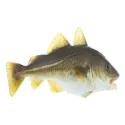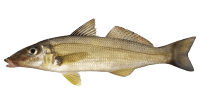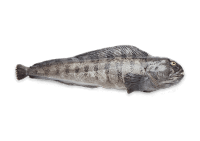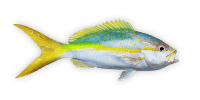Fish, whitefish, broad, head, eyes, cheeks and soft bones (Alaska Native) nutrition: calories, carbs, GI, protein, fiber, fats
*all the values are displayed for the amount of 100 grams
Top nutrition facts for Fish, whitefish, broad, head, eyes, cheeks and soft bones (Alaska Native)

| Calories ⓘ Calories for selected serving | 107 kcal |
| Net Carbs ⓘ Net Carbs = Total Carbohydrates – Fiber – Sugar Alcohols | 0 grams |
| Acidity (Based on PRAL) ⓘ PRAL (Potential renal acid load) is calculated using a formula. On the PRAL scale the higher the positive value, the more is the acidifying effect on the body. The lower the negative value, the higher the alkalinity of the food. 0 is neutral. | 18.1 (acidic) |
Iron ⓘHigher in Iron content than 86% of foods
Phosphorus ⓘHigher in Phosphorus content than 76% of foods
Protein ⓘHigher in Protein content than 72% of foods
Fats ⓘHigher in Fats content than 42% of foods
Calories ⓘHigher in Calories content than 28% of foods
Fish, whitefish, broad, head, eyes, cheeks and soft bones (Alaska Native) calories (kcal)
| Calories for different serving sizes of fish, whitefish, broad, head, eyes, cheeks and soft bones (Alaska Native) | Calories | Weight |
|---|---|---|
| Calories in 100 grams | 107 |
Mineral coverage chart
Mineral chart - relative view
Macronutrients chart
Protein:
Daily Value: 37%
18.6 g of 50 g
18.6 g (37% of DV )
Fats:
Daily Value: 6%
3.6 g of 65 g
3.6 g (6% of DV )
Carbs:
Daily Value: 0%
0 g of 300 g
0 g (0% of DV )
Water:
Daily Value: 4%
76.3 g of 2,000 g
76.3 g (4% of DV )
Other:
1.5 g
1.5 g
All nutrients for Fish, whitefish, broad, head, eyes, cheeks and soft bones (Alaska Native) per 100g
| Nutrient | Value | DV% | In TOP % of foods | Comparison |
| Calories | 107kcal | 5% | 72% |
2.3 times more than Orange
|
| Protein | 19g | 44% | 28% |
6.6 times more than Broccoli
|
| Fats | 3.6g | 6% | 58% |
9.3 times less than Cheese
|
| Net carbs | 0g | N/A | 75% |
N/A
|
| Carbs | 0g | 0% | 100% |
N/A
|
| Iron | 3.9mg | 49% | 14% |
1.5 times more than Beef broiled
|
| Phosphorus | 242mg | 35% | 24% |
1.3 times more than Chicken meat
|
Check out similar food or compare with current
NUTRITION FACTS LABEL
Nutrition Facts
___servings per container
Serving Size ______________
Serving Size ______________
Amount Per 100g
Calories 107
% Daily Value*
5.5%
Total Fat
3.6g
0
Saturated Fat 0g
0
Trans Fat
0g
0
Cholesterol 0mg
0
Sodium 0mg
0
Total Carbohydrate
0g
0
Dietary Fiber
0g
Total Sugars 0g
Includes ? g Added Sugars
Protein
19g
Vitamin D
0mcg
0
Calcium
0mg
0
Iron
3.9mg
49%
Potassium
0mg
0
*
The % Daily Value (DV) tells you how much a nutrient in a serving of food contributes to a daily diet. 2,000 calories a day is used for general nutrition advice.
Health checks
ⓘ
Dietary cholesterol is not associated with an increased risk of coronary heart disease in healthy individuals. However, dietary cholesterol is common in foods that are high in harmful saturated fats.
Source
Low in Cholesterol
ⓘ
Trans fat consumption increases the risk of cardiovascular disease and mortality by negatively affecting blood lipid levels.
Source
No Trans Fats
ⓘ
Saturated fat intake can raise total cholesterol and LDL (low-density lipoprotein) levels, leading to an increased risk of atherosclerosis. Dietary guidelines recommend limiting saturated fats to under 10% of calories a day.
Source
Low in Saturated Fats
ⓘ
While the consumption of moderate amounts of added sugars is not detrimental to health, an excessive intake can increase the risk of obesity, and therefore, diabetes.
Source
Low in Sugars
References
All the values for which the sources are not specified explicitly are taken from FDA’s Food Central. The exact link to the food presented on this page can be found below.


